Full Name Gertraud Humps Children none Siblings Inge Humps Movies Downfall | Nationality German Role Reporter Cause of death Cancer Name Traudl Junge | |
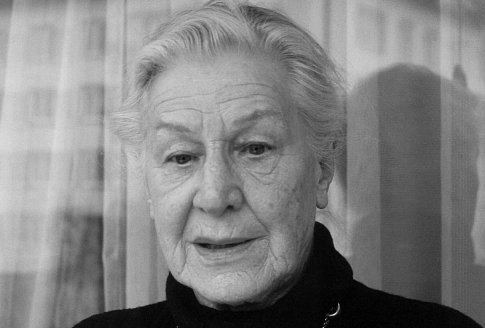 | ||
Occupation Secretary, sub-editor science reporter Books Until the Final Hour, Hitler's Last Secretary: A Firsthand Account of Life with Hitler Similar People Adolf Hitler, Oliver Hirschbiegel, Alexandra Maria Lara, Bruno Ganz, Hans Hermann Junge | ||
Gertraud "Traudl" Junge (née Humps; 16 March 1920 – 10 February 2002) worked as Adolf Hitler's last private secretary from December 1942 to April 1945. After typing out Hitler's will, she remained in the Berlin Führerbunker until his death. Following her arrest and imprisonment in June 1945, both the Soviet and the American militaries interrogated her. Later, in post-war West Germany, she worked as a secretary. In her old age she decided to publish her memoirs, claiming ignorance of the Nazi atrocities during the war, but blaming herself for missing opportunities to investigate reports about them. Her story, based partly on her book, Until the Final Hour, formed a part of several dramatizations, in particular the 2004 German film Downfall about Hitler's final ten days.
Contents
- Der Untergang Downfall Deleted Scene Traudl Junge Goebbels kids
- Early life
- Working for Hitler
- Berlin 1945
- Post war
- Later life
- References
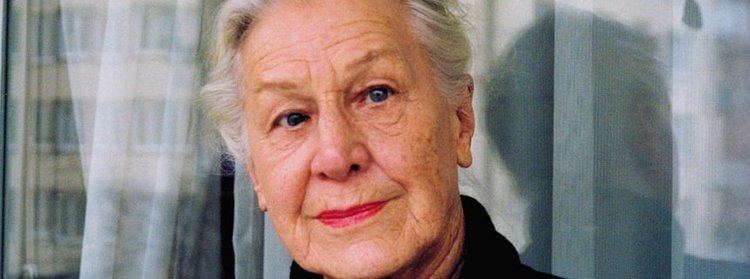
Der Untergang (Downfall) - Deleted Scene: Traudl Junge & Goebbels kids.
Early life
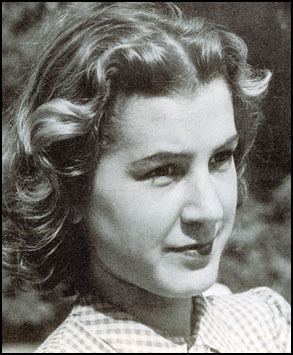
Gertraud "Traudl" Humps was born in Munich, the daughter of a master brewer and lieutenant in the Reserve Army, Max Humps and his wife Hildegard (née Zottmann). She had a sister, Inge, born in 1923. She once expressed her desire to become a ballerina as a teenager but was not accepted by a dance school. She then trained as a secretary. When she heard about an opening on the Chancellery staff, she applied for it.
Working for Hitler
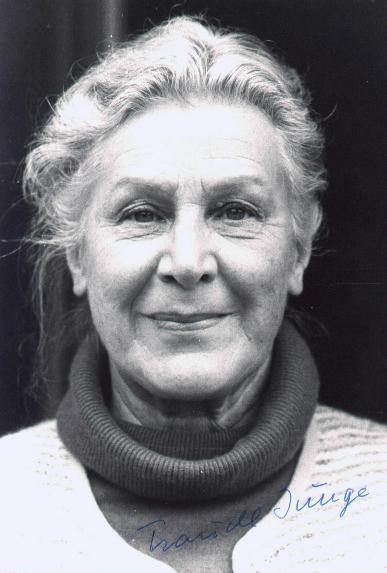
Traudl Junge began working for Hitler in December 1942. She was the youngest of his private secretaries.
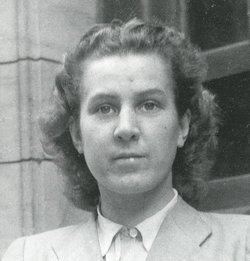
"I was 22 and I didn't know anything about politics; it didn't interest me", Junge said decades later, also saying that she felt great guilt for "...liking the greatest criminal ever to have lived."
She said, "I admit, I was fascinated by Adolf Hitler. He was a pleasant boss and a fatherly friend. I deliberately ignored all the warning voices inside me and enjoyed the time by his side, almost until the bitter end. It wasn't what he said, but the way he said things and how he did things."
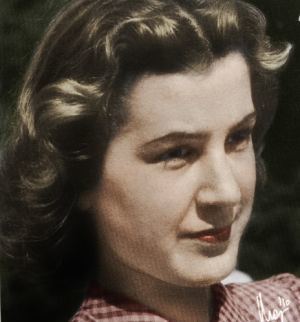
At Hitler's encouragement, in June 1943, Junge married Waffen-SS officer Hans Hermann Junge (1914–1944), who had been a valet and orderly to Hitler. He died in combat in France in August 1944. She worked at Hitler's side in Berlin, the Berghof in Berchtesgaden, at Wolfsschanze in East Prussia, and lastly back in Berlin in the Führerbunker.
Berlin, 1945
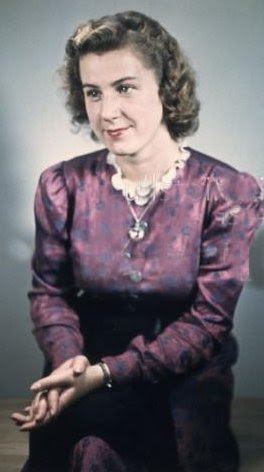
In 1945, Junge was with Hitler in Berlin. During Hitler's last days in Berlin, he would regularly eat lunch with his secretaries Junge and Gerda Christian. After the war, Junge recalled Gerda asking Hitler if he would leave Berlin. This was firmly rejected by Hitler. Both women recalled that Hitler in conversation made it clear that his body must not fall into the hands of the Soviets. He would shoot himself. Junge typed Hitler's last private and political will and testament in the Führerbunker the day before his suicide. Junge later wrote that while she was playing with the Goebbels children on 30 April, "Suddenly [...] there is the sound of a shot, so loud, so close, that we all fall silent. It echoes on through all the rooms. 'That was a direct hit,' cried Helmut [Goebbels] with no idea how right he is. The Führer is dead now."
On 1 May, Junge left the Führerbunker with a group led by Waffen-SS general Wilhelm Mohnke. Also in the group were Hitler's personal pilot Hans Baur, chief of Hitler's Reichssicherheitsdienst (RSD) bodyguard Hans Rattenhuber, secretary Gerda Christian, secretary Else Krüger, Hitler's dietician Constanze Manziarly and Dr. Ernst-Günther Schenck. Junge, Christian and Krüger made it out of Berlin to the River Elbe. The remainder of the group were found by Soviet troops on 2 May while hiding in a cellar off the Schönhauser Allee. The Soviet Red Army handed over those who had been in the Führerbunker to SMERSH for interrogation, to reveal what had occurred in the bunker during the closing weeks of the war.
Post-war
Although Junge had reached the Elbe, she was unable to reach the western Allied lines, and so she went back to Berlin. Getting there about a month after she had left, she had hoped to take a train to the west when they began running again. On 9 July, after living there for about a week under the alias "Gerda Alt", she was arrested by two civilian members of the Soviet military administration and was kept in Berlin for interrogation. While in prison she heard harrowing tales from her Soviet guards about what the German military had done to members of their families in Russia and came to realise that much of what she thought she knew about the war in the east was only what the Nazi propaganda ministry had told the German people and that the treatment meted out to Germans by the Russians was a response to what the Germans had done in the Soviet Union.
Junge was held in sundry jails, where she was often interrogated about her role in Hitler's entourage and the events surrounding Hitler's suicide. By December 1945, she had been released from prison but was restricted to the Soviet sector of Berlin. On New Year's Eve 1946, she was admitted to a hospital in the British sector for diphtheria, and remained there for two months. While she was there, her mother was able to secure for Junge the paperwork required to allow her to move from the British sector in Berlin to Bavaria. Receiving these on 2 February 1946, she travelled from Berlin and across the Soviet occupation zone (which was to become East Germany) to the British zone, and from there south to Bavaria in the American Zone. Junge was held by the Americans for a short time during the first half of 1946, and interrogated about her time in the Führerbunker. She was then freed, and allowed to live in postwar Germany.
Later life
Following the war, Junge appeared in two episodes (No. 16, "Inside the Reich" (1940–1944) and No. 21, "Nemesis: Germany (February – May 1945)") of the Thames Television (ITV) 1973 television documentary series The World at War and was interviewed for the 1975 book The Bunker by James P. O'Donnell and Uwe Bahnsen. She worked in secretarial jobs and for many years as chief secretary of the editorial staff of the weekly illustrated magazine Quick. Junge twice resided briefly in Australia, where her younger sister lived; her application for permanent residence was denied due to her past Nazi association, despite the fact that hundreds, if not thousands, of Nazi collaborators were allowed to migrate to Australia.
In 1989, Junge's manuscript about her life throughout the war was published as part of the book Voices from the Bunker by Pierre Galante and Eugene Silianoff (New York: G.P. Putnam's Sons). Also in that year, she was interviewed in the BBC documentary The Fatal Attraction of Adolf Hitler and discussed at length her impressions of Hitler and the final days with him in the Führerbunker. In 1991, she appeared in the documentary series Hitler's Henchmen produced by German television channel ZDF. The 2002 release of her memoirs Until the Final Hour, co-written with author Melissa Müller and describing the time she worked for Hitler, brought media coverage. She was also interviewed for the 2002 documentary film Blind Spot: Hitler's Secretary, which drew much attention.
Junge died from cancer in Munich on 10 February 2002 at the age of 81, reportedly having said shortly before her death, "Now that I've let go of my story, I can let go of my life." Further attention came two years later, when some of Junge's experiences with Hitler were portrayed in the Academy Award-nominated film Downfall. Excerpts from her interviews are seen at the beginning and at the end of the film. At the end, she states:
Of course, the horrors, of which I heard in connection of the Nuremberg trials; the fate of the 6 million Jews, their killing and those of many others who represented different races and creeds, shocked me greatly, but, at that time, I could not see any connection between these things and my own past. I was only happy that I had not personally been guilty of these things and that I had not been aware of the scale of these things. However, one day, I walked past a plaque on the Franz-Joseph Straße (in Munich), on the wall in memory of Sophie Scholl. I could see that she had been born the same year as I, and that she had been executed the same year I entered into Hitler’s service. And, at that moment, I really realised that it was no excuse that I had been so young. I could perhaps have tried to find out about things.
